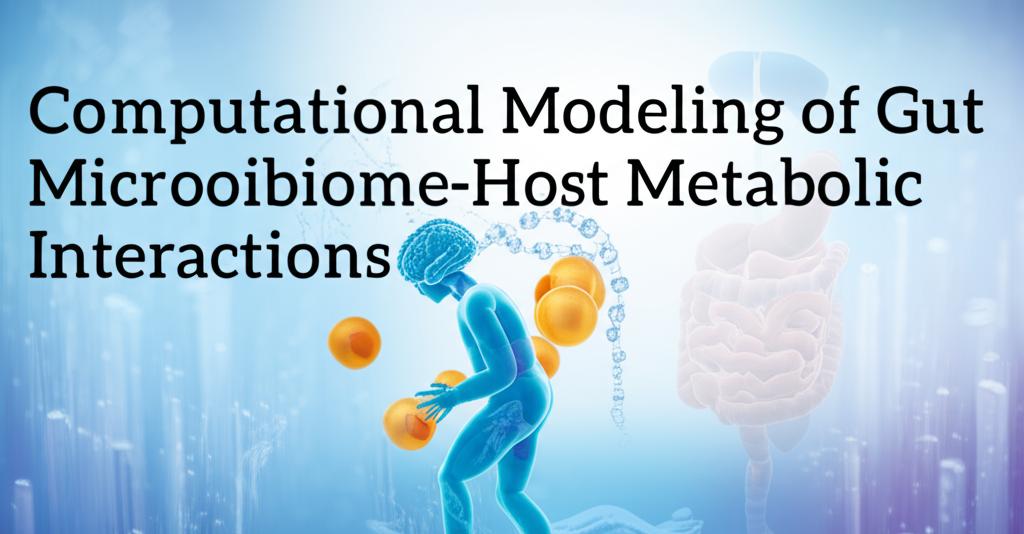The intricate relationship between the trillions of microbes residing in the human gut and their host is a frontier of intense research. These microbial communities, collectively known as the gut microbiome, function almost like an auxiliary metabolic organ, profoundly influencing host digestion, nutrient absorption, immune function, and overall health. Understanding the complex metabolic interactions occurring between these microbes and the host is crucial, yet experimentally challenging due to the sheer scale and dynamic nature of this ecosystem. Computational modeling has emerged as an indispensable tool to navigate this complexity, offering powerful ways to simulate, predict, and decipher these vital metabolic dialogues.
Genome-Scale Metabolic Models (GEMs) are a cornerstone of this computational effort. These models mathematically reconstruct the entire metabolic network of an individual microbe based on its genomic data. By applying constraint-based modeling techniques like Flux Balance Analysis (FBA), researchers can simulate how a microbe might utilize available nutrients (like those from diet) and predict the metabolites it produces under specific conditions. This allows for the in silico exploration of a microbe's metabolic capabilities and potential interactions.
Beyond single species, these modeling approaches are extended to understand interactions within the microbial community (microbe-microbe) and between the community and the host (microbe-host). Community models can simulate how different species might compete for nutrients or cooperate through cross-feeding, where the metabolic byproduct of one species serves as a nutrient for another. Crucially, models integrating microbial and host metabolism (often using human metabolic reconstructions like Recon) can predict the exchange of metabolites across the gut lining. This helps elucidate how microbial products, such as beneficial Short-Chain Fatty Acids (SCFAs) like butyrate, acetate, and propionate, are produced from dietary components (like fiber) and utilized by host cells, impacting everything from gut lining health to systemic inflammation and energy balance.
To enhance the realism and predictive power of these models, researchers increasingly integrate multi-omics data. Metagenomic data reveals the genetic potential of the entire community, metatranscriptomics shows which genes are actively expressed, metaproteomics identifies the proteins present, and metabolomics directly measures the small molecules produced. Integrating these diverse data types helps constrain the models, making simulations more specific to particular conditions, diets, or disease states. For instance, transcriptomic data can guide simulations by indicating which metabolic pathways are likely active.
Network analysis provides another lens, examining the structural properties of metabolic networks to identify critical enzymes, pathways, or potential metabolic dependencies between microbes and the host. Agent-Based Models (ABMs) offer a different perspective, simulating individual microbes as 'agents' that follow specific rules for growth, movement, and interaction within a defined spatial environment. Newer hybrid approaches, like MetaBiome, combine ABM's spatial dynamics with the detailed metabolic predictions of GEMs, allowing for investigation into how spatial organization within the gut influences metabolic function. Machine learning and artificial intelligence are also playing a growing role, adept at identifying complex patterns within large multi-omics datasets and predicting host phenotypes or disease risks based on microbiome features.
The applications of these computational models are vast. They help researchers understand the mechanisms linking microbiome alterations to diseases like Inflammatory Bowel Disease (IBD), obesity, type 2 diabetes, cardiovascular diseases, and even certain cancers. By simulating the impact of dietary changes, models can predict how specific foods or supplements might modulate microbial metabolism and host health, paving the way for personalized nutrition strategies. They also aid in the rational design of interventions like probiotics (beneficial live bacteria) or prebiotics (substrates that feed beneficial bacteria), predicting which combinations might be most effective. Furthermore, models can help decipher the mechanisms behind successful treatments like Fecal Microbiota Transplantation (FMT).
Despite significant progress, challenges remain. The metabolic functions of many gut microbes are still poorly understood, limiting the accuracy and completeness of GEMs. Defining biologically relevant objective functions for complex community simulations can be difficult. Integrating diverse, noisy, and often sparse multi-omics data effectively is an ongoing challenge, as is capturing the crucial temporal and spatial dynamics of the gut environment. Experimental validation of in silico predictions remains essential but can be complex and resource-intensive.
The future points towards increasingly sophisticated and integrated models. Combining mechanistic approaches like GEMs with data-driven machine learning, developing more comprehensive and curated model repositories (like the AGORA database), and refining methods to capture spatiotemporal dynamics are key directions. Personalized metabolic models, tailored to an individual's unique microbiome composition and host genetics, hold immense promise for precision medicine. By continuing to refine these computational tools, we can unlock a deeper understanding of the metabolic partnership between the gut microbiome and its host, ultimately leading to novel strategies for maintaining health and treating disease.

